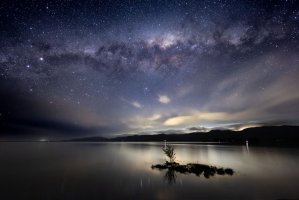You are using an out of date browser. It may not display this or other websites correctly.
You should upgrade or use an alternative browser.
You should upgrade or use an alternative browser.
OpticalLimits reviews the Canon EOS RF 16mm F2.8 STM
- Thread starter Richard CR
- Start date
If you haven't changed the defaults: yes, they will be applied to the video.Question - do the auto corrections apply in video automatically? I'd think trying to shoot video with straight lines would be quite difficult otherwise with this lens.
Upvote
0
Upvote
0
Frodo, that's a mighty nice photo to my eye, I like it and I complement you on your skill! Well done, thanks for sharing!For those who consider that the RF 16/2.8 is not suitable for technical uses, such as astrophotography, I will print this image (shot last night) at A2. 10 seconds at f/4 at ISO 6400 on EOS R processed in DXO PureRaw2, 12 images stacked in Sequator.
I will pull you up on your reasoning though, that's the logical fallacy of composition and division, where the assumption is that one part of something will apply to the whole, or that the whole must apply to all the parts. Exceptions don't make the rule. That excellent photo is an exception, under particular circumstances, with a specific subject, using a particular technique (stacking).
The quality of your image far exceeds what we typically see from the RF 16mm f/2.8.
If someone was to say that this lens was no good for anything, they would be wrong. It does have its specific uses, but these are only a subset of what UW lenses of this focal length can normally do, which is why it's justifiable to say it's not a very good lens, it has significant limitations, but works for particular niche uses well, such as hiking, travel, fixed subject distance/self recording video (vlogging) and apparently stacked night photos (where heavy vignetting and the lack of fine details in the corners don't matter).
That's why it's important is know the limitations of the gear we use, so we can work around it, and use it where it's appropriate. Different people may have different requirements, and lenses all make compromises in the areas of size/weight, image quality or price (you can only pick two of the three).
Canon's decision in the Rf system, in their entry level lenses, has been to focus on building a system around the parameters of lightweight/small and cheap, so by selecting these two, we have to give up something in image quality. Great if you prefer lightweight/small lenses (and some are better value for money than others), but that's not every photographer's preference. That only leaves very expensive (read overpriced) top-tier L-series lenses. There would be a significant proportion of photographers taht are fine with a larger, heavier lens that costs a bit more and delivers better image quality, but don't want to pay the extortionate prices of Canon RF-L lenses, and that is where the problem lies...
Upvote
0
unfocused
Photos/Photo Book Reviews: www.thecuriouseye.com
The "subsets" you mention constitute a huge percentage of what people shoot with a wide angle lens. A more accurate assessment would be to say that this lens is a very handy, affordable and good quality ultra-wide angle lens for general use....If someone was to say that this lens was no good for anything, they would be wrong. It does have its specific uses, but these are only a subset of what UW lenses of this focal length can normally do, which is why it's justifiable to say it's not a very good lens, it has significant limitations, but works for particular niche uses well, such as hiking, travel, fixed subject distance/self recording video (vlogging) and apparently stacked night photos (where heavy vignetting and the lack of fine details in the corners don't matter)...
Here is another example of how the lens can be used.

In terms of "image quality" that is not only a subjective value judgment but it implies that the lower cost Canon lenses are giving up a significant amount of image quality, when in reality the compromises are not that significant under most circumstances and for most users....lenses all make compromises in the areas of size/weight, image quality or price (you can only pick two of the three).
Canon's decision in the Rf system, in their entry level lenses, has been to focus on building a system around the parameters of lightweight/small and cheap, so by selecting these two, we have to give up something in image quality. Great if you prefer lightweight/small lenses (and some are better value for money than others), but that's not every photographer's preference. That only leaves very expensive (read overpriced) top-tier L-series lenses. There would be a significant proportion of photographers taht are fine with a larger, heavier lens that costs a bit more and delivers better image quality, but don't want to pay the extortionate prices of Canon RF-L lenses, and that is where the problem lies...
Your comments also fail to recognize diminishing returns. It's common knowledge that the added costs between "good enough" and "excellent" is a steep arc. You and others seem to be under the misimpression that quality follows a straight line path upwards and that the cost of adding additional quality only requires incremental and evenly proportional investments, when in reality as we approach perfection the relative costs rise out of proportion to the gains. That's why the gap between a medium telephoto at f4 and f2.8 is much smaller than the gap between f2.8 and f2, for example.
You think that giving up some weight savings would offer an equal or proportional cost savings, but of course, you have no evidence to support that theory.
Upvote
0
I would disagree, UW lenses are predominately used for landscape, real estate and architecture, with astrophotography probably as a subset of landscape. Hiking/travel and vlogging aren't as large. Keep in mind that lenses that can shoot the major categories I mentioned can also do the latter, but it doesn't work the other way around.The "subsets" you mention constitute a huge percentage of what people shoot with a wide angle lens. A more accurate assessment would be to say that this lens is a very handy, affordable and good quality ultra-wide angle lens for general use.
Here is another example of how the lens can be used.
What is 'good enough' image quality is totally subjective, depends on what you're doing with the photographs. What constitutes good, excellent and razor-sharp image quality is objective, measurable and quantifiable. Fact is, the RF 16mm f/2.8 is not a good lens, the RF 14-35 L is, even with its compromises, it delivers far better images, and the RF 15-35L trounces that. You get what you pay for, even relatively speaking at Canon's inflated prices. Market segmentation...In terms of "image quality" that is not only a subjective value judgment but it implies that the lower cost Canon lenses are giving up a significant amount of image quality, when in reality the compromises are not that significant under most circumstances and for most users.
Your comments also fail to recognize diminishing returns. It's common knowledge that the added costs between "good enough" and "excellent" is a steep arc. You and others seem to be under the misimpression that quality follows a straight line path upwards and that the cost of adding additional quality only requires incremental and evenly proportional investments, when in reality as we approach perfection the relative costs rise out of proportion to the gains. That's why the gap between a medium telephoto at f4 and f2.8 is much smaller than the gap between f2.8 and f2, for example.
You think that giving up some weight savings would offer an equal or proportional cost savings, but of course, you have no evidence to support that theory.
I don't think anyone is missing the point of diminishing returns, that's virtually a straw man argument, every second comment I post reminds people of the compromises in lenses. I'm sure most are familiar with the 80-20 rule, something like an 85mm f/1.4 will give 80% of the performance of a company's 85mm f/1.2 for a lot less money, but to get the remaining 20% of the performance costs orders of magnitudes more. I hope most buyers know this!
That said, when Canon creates a strange product range where there is no single step up, but a huge gulf between ultra-cheap build with a sometimes fairly compromised IQ, and ultra-expensive with awesome IQ, and no middle ground, then that stuff up that model. I suspect taht's the point being missed here. The mid-range lenses we saw in EF mount gave us better image quality at greater size/weight/price without having to buy flagship glass, the fact that a middle tier taht was cheaper than the top tier is ample evidence that's totally possible, heck I own many of those lenses! Maybe that's why people prefer to have choice as consumers, and perhaps that's why a huge third-party lens market exists. Food for thought...
Upvote
0
unfocused
Photos/Photo Book Reviews: www.thecuriouseye.com
Yeah, it's worthless for landscapes.I would disagree, UW lenses are predominately used for landscape, real estate and architecture, with astrophotography probably as a subset of landscape. Hiking/travel and vlogging aren't as large. Keep in mind that lenses that can shoot the major categories I mentioned can also do the latter, but it doesn't work the other way around.

I have both the RF16mm f2.8 and the RF 14-35 L. One is light, tiny, inexpensive and faster by a stop. One is wider by 2mm, zooms and is weather resistant....Fact is, the RF 16mm f/2.8 is not a good lens, the RF 14-35 L is, even with its compromises, it delivers far better images, and the RF 15-35L trounces that. You get what you pay for, even relatively speaking at Canon's inflated prices. Market segmentation...
If anyone has trouble producing quality images with either lens, it's not the lens that is the problem.
Upvote
0
Fact is, the RF 16mm f/2.8 is not a good lens
Actually that's not a fact, that's a value judgment. Someone that values logic as highly as you claim should realize that.
I actually agree with your take for the most part wrt the optical properties of the RF 16 f/2.8. I prefer lenses with better optical correction mainly because I do shoot a good amount of astro, but that simply means a lens without that might not be good for me. Whether it is good for someone else entirely depends on their goals or intended uses for the lens.
Last edited:
Upvote
0
Your comments also fail to recognize diminishing returns. It's common knowledge that the added costs between "good enough" and "excellent" is a steep arc. You and others seem to be under the misimpression that quality follows a straight line path upwards and that the cost of adding additional quality only requires incremental and evenly proportional investments, when in reality as we approach perfection the relative costs rise out of proportion to the gains.
Very well put. IMO, the lenses with poor optical correction that rely more on digital processing than is typical for the final result such as the RF 16, RF 24, etc can produce good images most of the time for most people in most situations, which was obviously the goal to keep their prices low. The only places where they can struggle imo is in shots that need specific and accurate rendering of small minute details in the corners, some examples would be night shots with star fields, or small objects in the corners that stand apart from the rest of the background. The digital correction can sometimes result in longitudinal smearing of small elements as the image is stretched to correctly fill the frame. This is less noticeable in shots with broad consistent features throughout the image like the landscape shot you shared.
Upvote
0
L
Loswr
Guest
You can clearly see the horrible distortion – none of the rocks have straight lines, nor do the cactuses. Plus, the lens seems to render most of the image in brown hues. Obviously, the lens has problems.
Upvote
0
That's a false dichotomy logical fallacy, that there are only two possible states, useless or awesome lol!Yeah, it's worthless for landscapes.
The adequacy of lenses for a particular task run on a continuum, and some aren't the best choice, though they may just cut it, in certain shots where the compromises aren't that obvious due to subject matter, conditions, and composition, may suffice.
Precisely, different lenses, for different purposes, at different price points, with different features and different image quality!I have both the RF16mm f2.8 and the RF 14-35 L. One is light, tiny, inexpensive and faster by a stop. One is wider by 2mm, zooms and is weather resistant.
If anyone has trouble producing quality images with either lens, it's not the lens that is the problem.
Yes, I also agree with the sufficiency argument, that almost any reasonable camera gear can take amazing photos and is more than sufficient for most people's needs. If people like buying really fancy gear, because they want it, and they enjoy that, great for them! If you had to take a photo for a paid job, you'd take your RF 14-35, it's sufficient for the task and don't really need a RF 15-35 if a wide 2.8 aperture isn't needed. You wouldn't take the RF16mm, it's not in that 'sufficient tier'.
I don't understand the defensiveness people display over brands or specific products they own. The lower tier of Canon's RF lenses have quite a few compromises, thought there are a few gems in there like the RF 35mm f/1.8 macro, but some people even dislike that. I like it but I don't get worked up when people point out its shortcomings. The shortcomings are real, whether it works for me and not for them is an individual case-by-case matter. I've managed some decent shots with my RF 50mm f/1.8 but that doesn't make it a great lens, and in my opinion optically it's worlds better than the RF 16mm.
What's so hard for people to accept about the fact that cheap consumer lenses have compromises to optical quality, which is measurable. They're not as good as the f/4 L lenses which are generally not as good as the f/2.8 L lenses, in UW at least. If you like the lens, great, nobody is saying you can't, but on the same token, everybody doesn't have to love it either. It's as silly as arguing over which flavour of ice-cream is better lol!
Upvote
0
Maybe they should get all the Nat Geo landscapes photog do shoot all their work with it. After all, it's much lighter, cheaper, and nobody should ever need Canon's more expensive L lenses lol! But what about zoom... zoom with your legs!You can clearly see the horrible distortion – none of the rocks have straight lines, nor do the cactuses. Plus, the lens seems to render most of the image in brown hues. Obviously, the lens has problems.
Upvote
0
For those who consider that the RF 16/2.8 is not suitable for technical uses, such as astrophotography, I will print this image
First of all great image. If I were just looking at that image in the full size without zooming in, I can't see anything wrong with it. Looking at it in more detail however (even not at full resolution), it becomes apparent what some of the weaknesses are of a cheap lens like the RF 16 for an application like astro.
This is an example of a star more in the middle of the image.
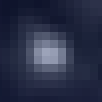
It is nice and circular, with the light distributed correctly most strongly at the center and then fading toward the edge of the disc. The color is also uniform and well rendered.
This is an example of a star more toward the corner of the image.
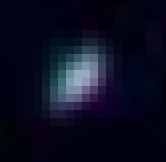
You can see that it has been stretched with a more longitudinal component added and is no longer a circle, and it also exhibits some discoloration due to coma. Now, not all stars in the image are like this, I can see some that are rendered well even in the vicinity of the corners, but it's really a hit and miss still as to whether the digital correction gets it right.
Last edited:
Upvote
0
No it's a fact, the results produced by Imatest which show LW/PH, which is the level of detail that the lens resolves, an objective measurement, show it to b lacking.Actually that's not a fact, that's a value judgment. Someone that values logic as highly as you claim should realize that.
I actually agree with your take for the most part wrt the optical properties of the RF 16 f/2.8. I prefer lenses with better optical correction mainly because I do shoot a good amount of astro, but that simply means a lens without that might not be good for me. Whether it is good for someone else entirely depends on their goals or intended uses for the lens.
I think all the reviews tally up in terms of their findings, including the one this article is about:
"Central sharpness is outstanding from f/2.8 to f/5.6, excellent from f/8 to f/16 and still very good at f/22. The edges do not fare so well, but are very good from f/2.8 to f/5.6, good from f/8 to f/16 and just fair at f/22. Depending on the subject matter, the lower edge performance would not be an issue in say vlogging and in any event is better at longer distances than test charts."

Canon RF 16mm F/2.8 STM Lens Review
John Riley has been putting the Canon RF 16mm f/2.8 STM lens to the test with the help of the Canon R6 mirrorless camera.
"The corners are soft at f/2.8, with the sharpness pushing out nicely as the lens is stopped down. The f/5.6 and f/8 corners are relatively good for a 16mm lens, especially for one at this price point. At longer distances, subject details become smaller, and the blur seems a touch stronger. Again, these are extreme corners, and the image quality improves deeper into the image circle. As mentioned in the resolution chart test results discussion, lateral CA is an issue in the corners."
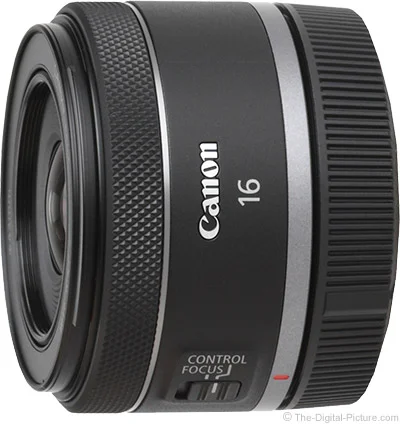
Canon RF 16mm F2.8 STM Lens Review
Is the Canon RF 16mm F2.8 STM Lens right for you? Learn all you need to know in The-Digital-Picture.com's review!
"Our Imatest tests showed the review lens to be capable of exceeding expectations for the 20-megapixel sensor in the EOS R6 camera – although only in the centre of the frame. Resolution fell below expectation roughly half way out from the centre and declined even further towards the periphery. This pattern was true for both JPEG and CR3.RAW files, although the latter were generally higher in resolution.
The highest resolution occurred at f/4, with a slow decline to f/8 where diffraction began to take effect. Interestingly, central resolution remained much higher than peripheral resolution from about f/3.5 onwards, as shown in the graph of our test result below."

Canon RF 16mm f/2.8 STM lens - Photo Review
Canon’s first RF ultra-wide-angle prime lens is compact, weighs only 165 grams and is ideal for architecture, real estate, landscape, and night sky photography.
"Lens designers have a goal in mind and today can achieve it with traditional optics alone or a combination of optics and digital correction. If you want a pure optical solution, there are many well-corrected alternatives, such as the two L ultra-wide zooms, and I’ve no doubt L-series wide primes for the RF system will come soon, but these are all larger, heavier and more expensive. If you want a compact and affordable ultra-wide lens like the RF 16 2.8, it’s going to employ digital corrections and you have to ask yourself if the end result satisfies your needs."
Canon RF 16mm f2.8 STM review | Cameralabs
 www.cameralabs.com
www.cameralabs.com
"There are weak points. Vignetting was present in our test images up to f/11, and was particularly horrible at f/2.8, with the furthers corners of our images virtually black. Stopping the aperture down alleviated the problem somewhat, with shutter speed or ISO the obvious casualties. Sharpness also suffered towards the corners. Chromatic aberration is the next problem, which was pronounced whenever we had high-contrast edges towards the corners of our images. In actual fact, 'corners' doesn’t quite describe just how far into an image we saw chromatic aberration – in some of our worst affected images we saw purple fringing as far as a fifth of the way into the frame.
It’s not just a problem at large apertures, either – we got problems at f/8. Using Lightroom’s built-in profile for this lens didn’t help much – we needed to resort to the manual Defringe tool, although this did successfully remove the problem. In fairness, chromatic aberration is something you’ll only see on images with high-contrast edges towards the corners of your images, so you won’t be dealing with it every time, but it’s definitely a weak spot."
"Don't buy it if...
You don’t like image editing
It's by no means bad, but this lens' image quality is nonetheless a good example of the compromises you make when you shop at this end of the lens market."
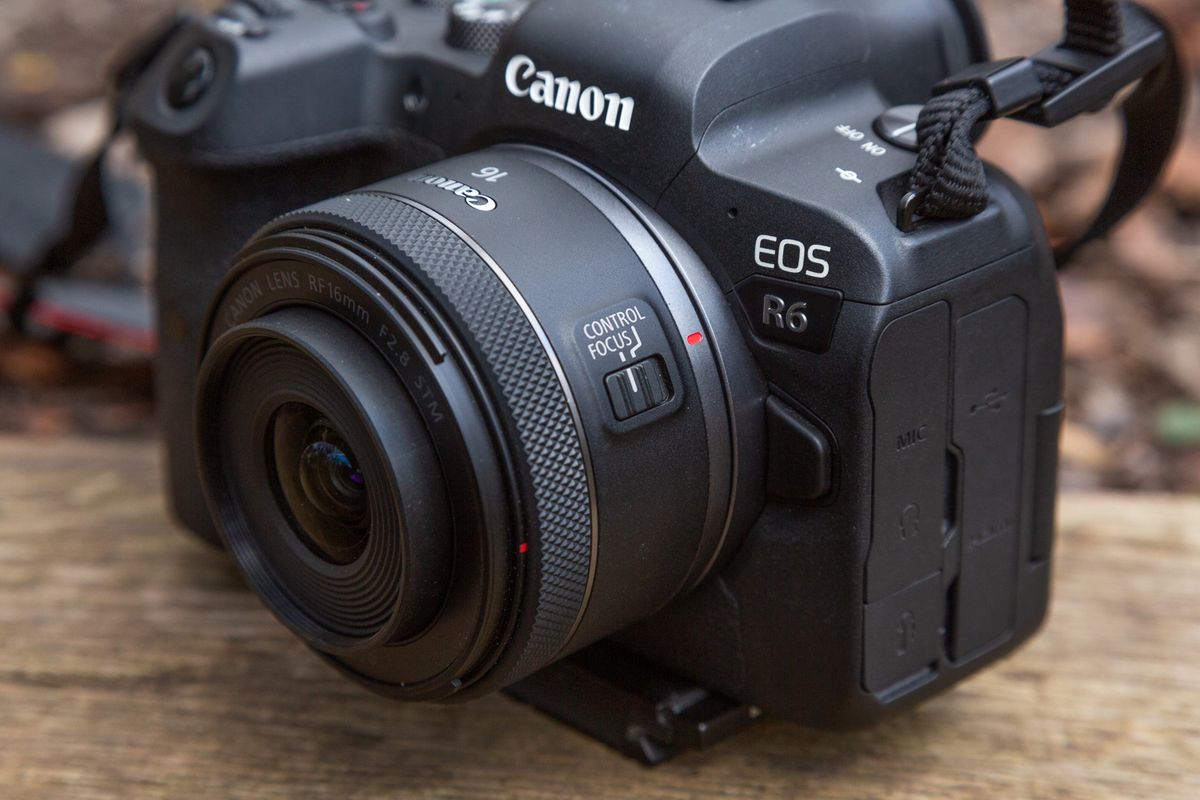
Canon RF 16mm f/2.8 STM review
Basically weightless, ultra-wide and very practical
As I keep saying, we can learn about the limitations of our lenses so we can work around them in use to get the shots we want, or we can just deny every review because we're emotionally attached to our possessions!
Upvote
0
No it's a fact
No it's not. What is a fact is this quote you had from Cameralabs.
"There are weak points".
Sure, the lens has some weak points, that's factual. Most lenses have strong and weak points. There is no universal lens that does everything the best.
Whether a lens is "good" for a particular application depends on whether the weak points affect the intended use in a negative way such that another lens would be better for that particular application. There is no universal good or bad designation you can give any lens given the myriad of possible uses.
Upvote
0
L
Loswr
Guest
Here's another example of the apparent weaknesses of a cheap lens for an application like astro, borrowed from a TDP review.First of all great image. If I were just looking at that image in the full size without zooming in, I can't see anything wrong with it. Looking at it in more detail however (even not at full resolution), it becomes apparent what some of the weaknesses are of a cheap lens like the RF 16 for an application like astro.
This is an example of a star more in the middle of the image.
View attachment 205657
It is nice and circular, with the light distributed correctly most strongly at the center and then fading toward the edge of the disc. The color is also uniform and well rendered.
This is an example of a star more toward the corner of the image.
View attachment 205658
You can see that it has been stretched with a more longitudinal component added and is no longer a circle, and it also exhibits some discoloration due to coma. Now, not all stars in the image are like this, I can see some that are rendered well even in the vicinity of the corners, but it's really a hit and miss still as to whether the digital correction gets it right.
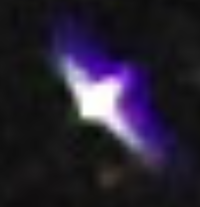
Except this particular example of a 'cheap lens' is the RF 50mm f/1.2L that costs nearly 8 times as much as the 16/2.8.
Maybe I'm missing your point...
Upvote
0
Look at the images in the comparisons, Gordon uses diagonal images to put details in corners, because putting compositions with dark or uniform undetailed corners won't show the deficiencies.No it's not. What is a fact is this quote you had from Cameralabs.
"There are weak points".
Sure, the lens has some weak points, that's factual. Most lenses have strong and weak points. There is no universal lens that does everything the best.
Whether a lens is "good" for a particular application depends on whether the weak points affect the intended use in a negative way such that another lens would be better for that particular application. There is no universal good or bad designation you can give any lens given the myriad of possible uses.
Come on, they all report from different perspectives, look at the tests in totality. Do I have to point out the logical fallacy here? Again, a fallacy of composition, because Gordon hasn't pointed out the deficiencies in the same way as the others (he's not so direct in case you're wondering), your assumption that one case defines all cases and somehow invalidates all the other test results? He doesn't even contradict them, he just makes the case more lightly.
TDP always has a good test procedure, please look at the corner crops there (see image blow). If that doesn't look totally soft and blurry to you, then maybe I need to get my eyes checked lol!

Canon RF 16mm F2.8 STM Lens Review
Is the Canon RF 16mm F2.8 STM Lens right for you? Learn all you need to know in The-Digital-Picture.com's review!
From TDP, corner crop from image stopped down to f/8.

Upvote
0
L
Loswr
Guest
You are saying that a certain resolution threshold separates 'good' lenses from 'bad' lenses. Any way you look at it, that's value judgement. Period. Full stop.No it's a fact, the results produced by Imatest which show LW/PH, which is the level of detail that the lens resolves, an objective measurement, show it to b lacking.
Upvote
0
Maybe I'm missing your point...
My point is simple, different applications often require different lenses, there is no universal good or bad, and as you just pointed out, price is not necessarily an indication that a lens is going to perform better at every possible application.
For example, the $450 Samyang EF 135mm f/2.0 performs better wrt star rendering in the corners than the $2300 RF 50mm 1.2.
But fair point that I shouldn't have used "cheap" as a qualifier to indicate "bad", since I just gave a counterexample of that.
Last edited:
Upvote
0
I didn't think that the RF 50 f/1.2 was considered a decent astro lens (as the huge coma here shows), it's not dependent on lens price but design. If I recall the astro folk use a lot of low distortion UW Laowas and other third-party brands, and not many native Canon lenses from what I've read, not my area, relaying what I've seen. That 50 is a great everything else lens though!Here's another example of the apparent weaknesses of a cheap lens for an application like astro, borrowed from a TDP review.
View attachment 205659
Except that 'cheap lens' is the RF 50mm f/1.2L that costs nearly 8 times as much as the 16/2.8.
Maybe I'm missing your point...
Upvote
0
Similar threads
- Replies
- 12
- Views
- 6K
- Replies
- 167
- Views
- 26K
- Replies
- 7
- Views
- 2K

